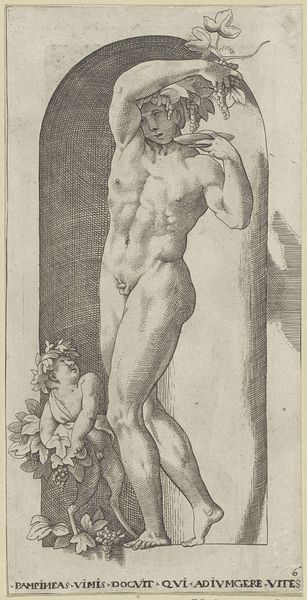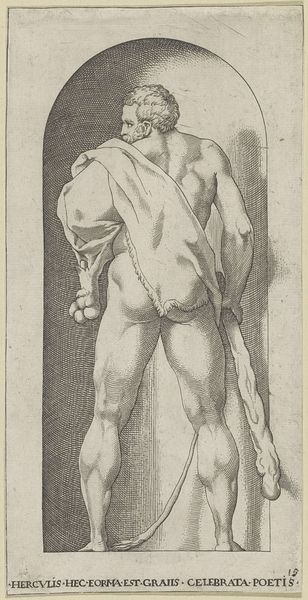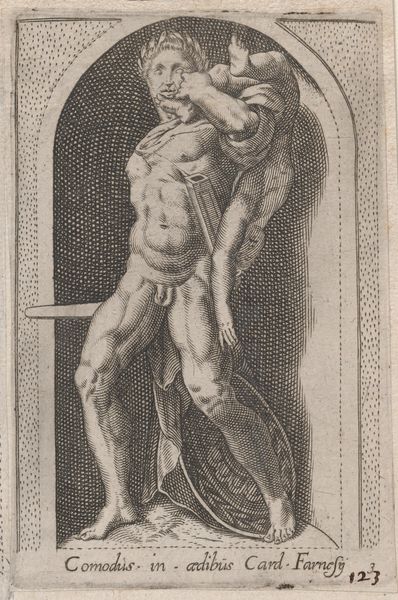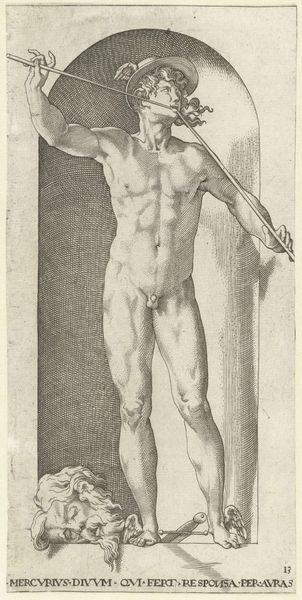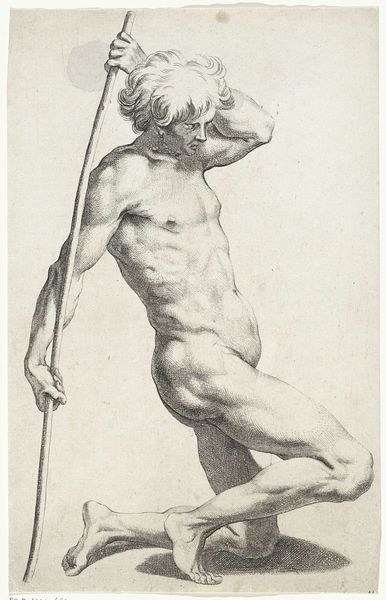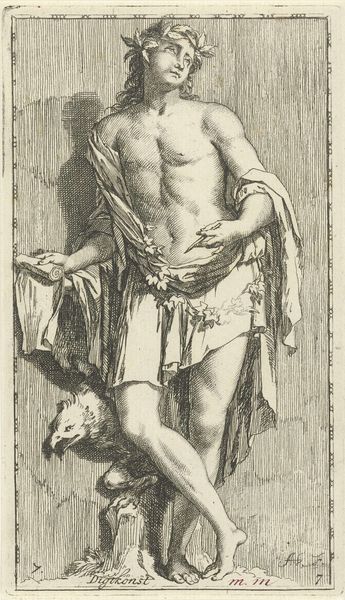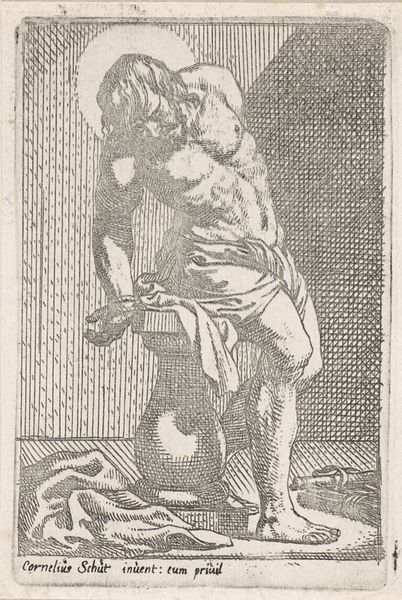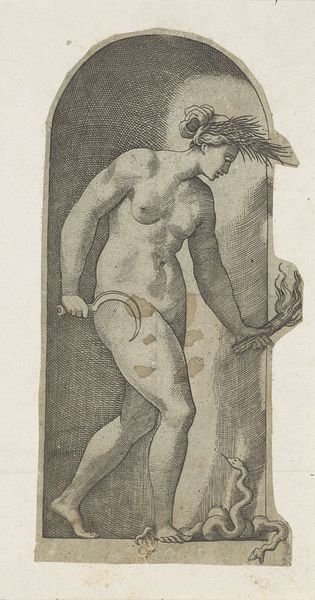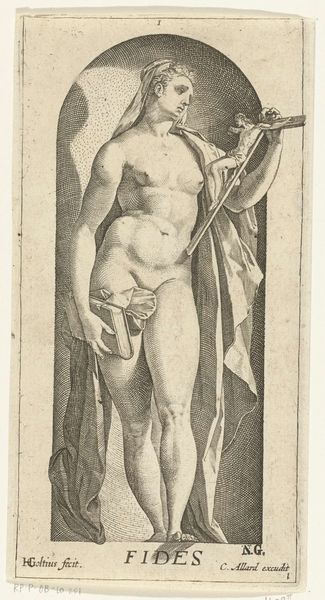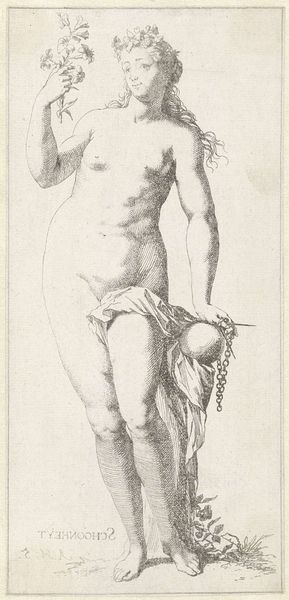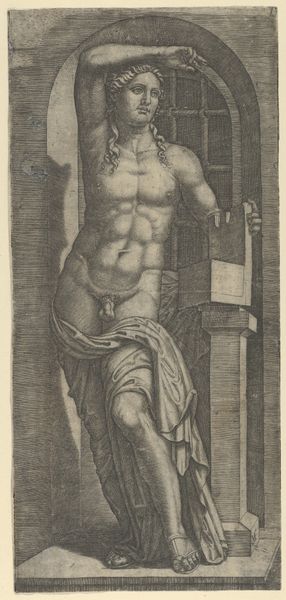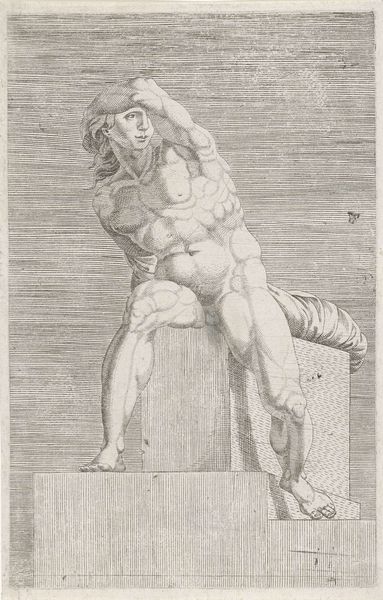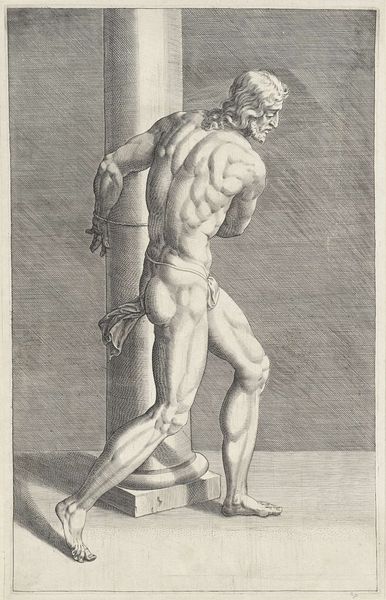
print, intaglio, engraving
# print
#
intaglio
#
old engraving style
#
mannerism
#
figuration
#
line
#
history-painting
#
nude
#
engraving
Dimensions: height 206 mm, width 103 mm
Copyright: Rijks Museum: Open Domain
This print of Pluto was made by Jacob Binck in the 16th century using engraving, a process involving carving lines into a metal plate, inking it, and pressing it onto paper. The stark contrast and fine lines are characteristic of this intaglio technique. Consider the labor invested in creating this image. Each line was carefully etched by hand, demanding precision and skill. The varying depths and densities of the lines create shading and texture, giving Pluto and his canine companion a three-dimensional presence. It would have been infinitely reproducible, allowing Binck to generate income for his family. Engraving was not just a technical process but a cultural one. It facilitated the spread of ideas and images, democratizing art in a way previously unimaginable. Prints like these allowed for the dissemination of classical myths and artistic styles, contributing to the broader intellectual currents of the Renaissance. By understanding the materials and processes involved in creating this print, we gain insight into the intersection of craft, design, and materiality and how these shape our understanding of art and its role in society.
Comments
No comments
Be the first to comment and join the conversation on the ultimate creative platform.
